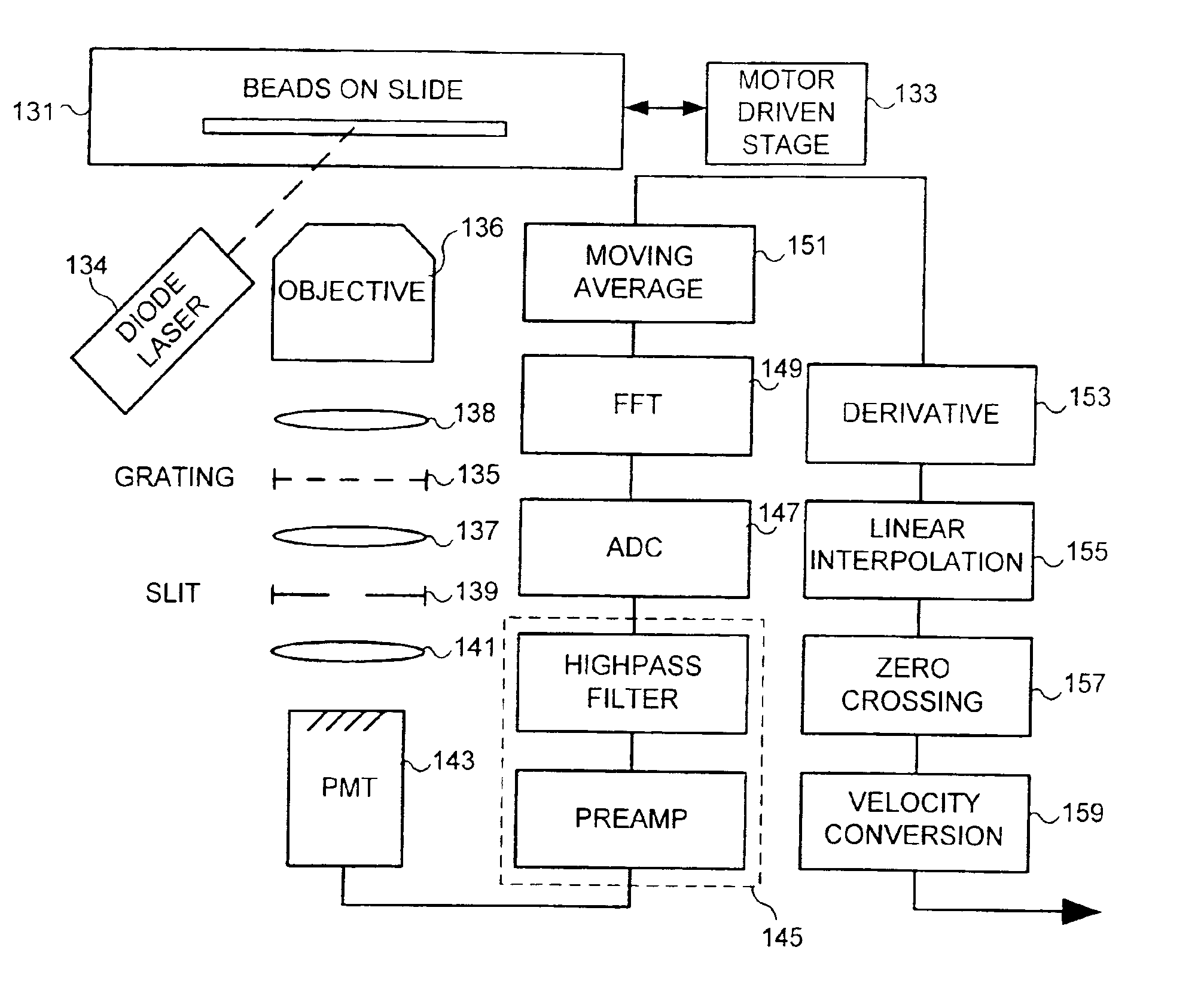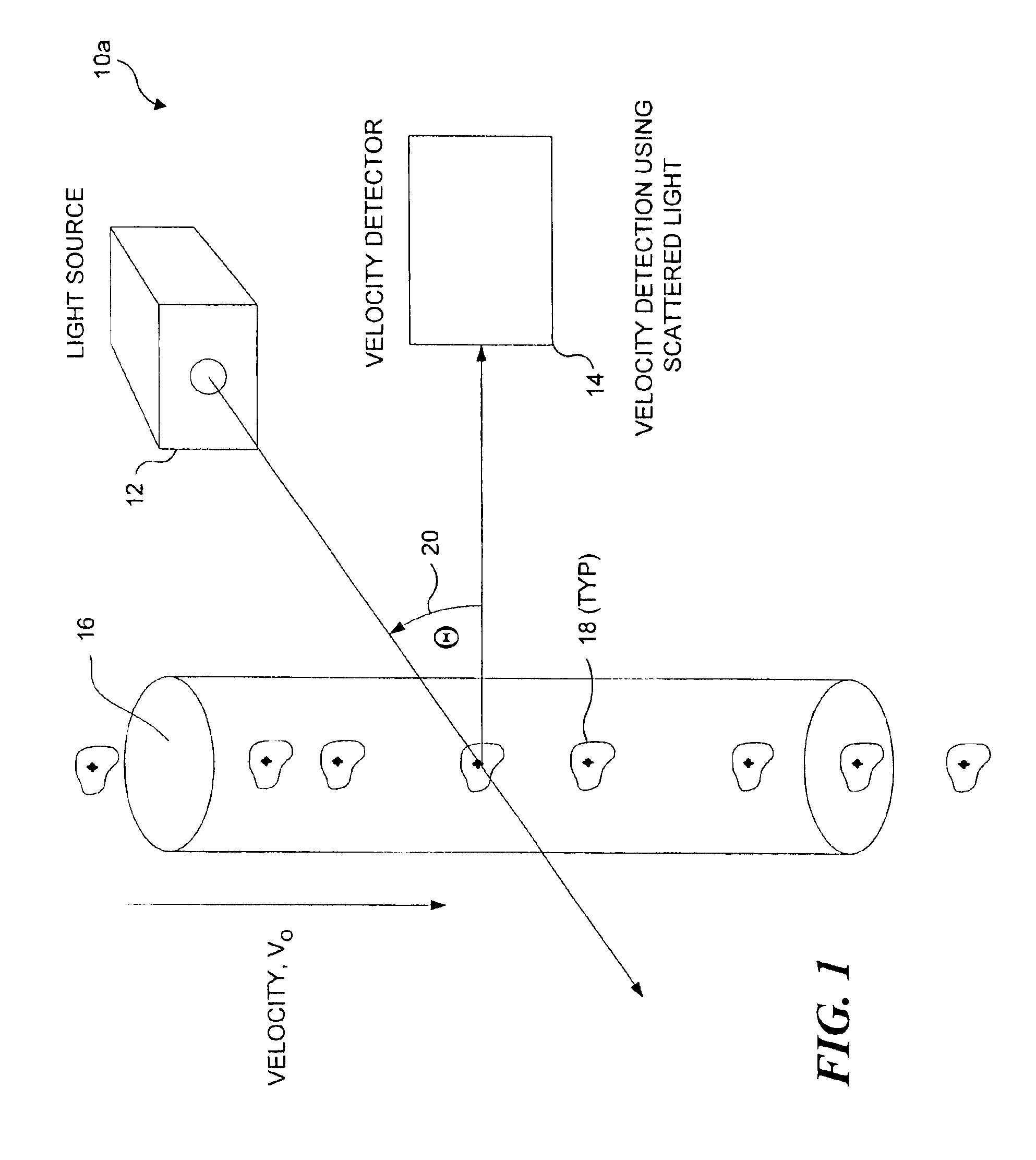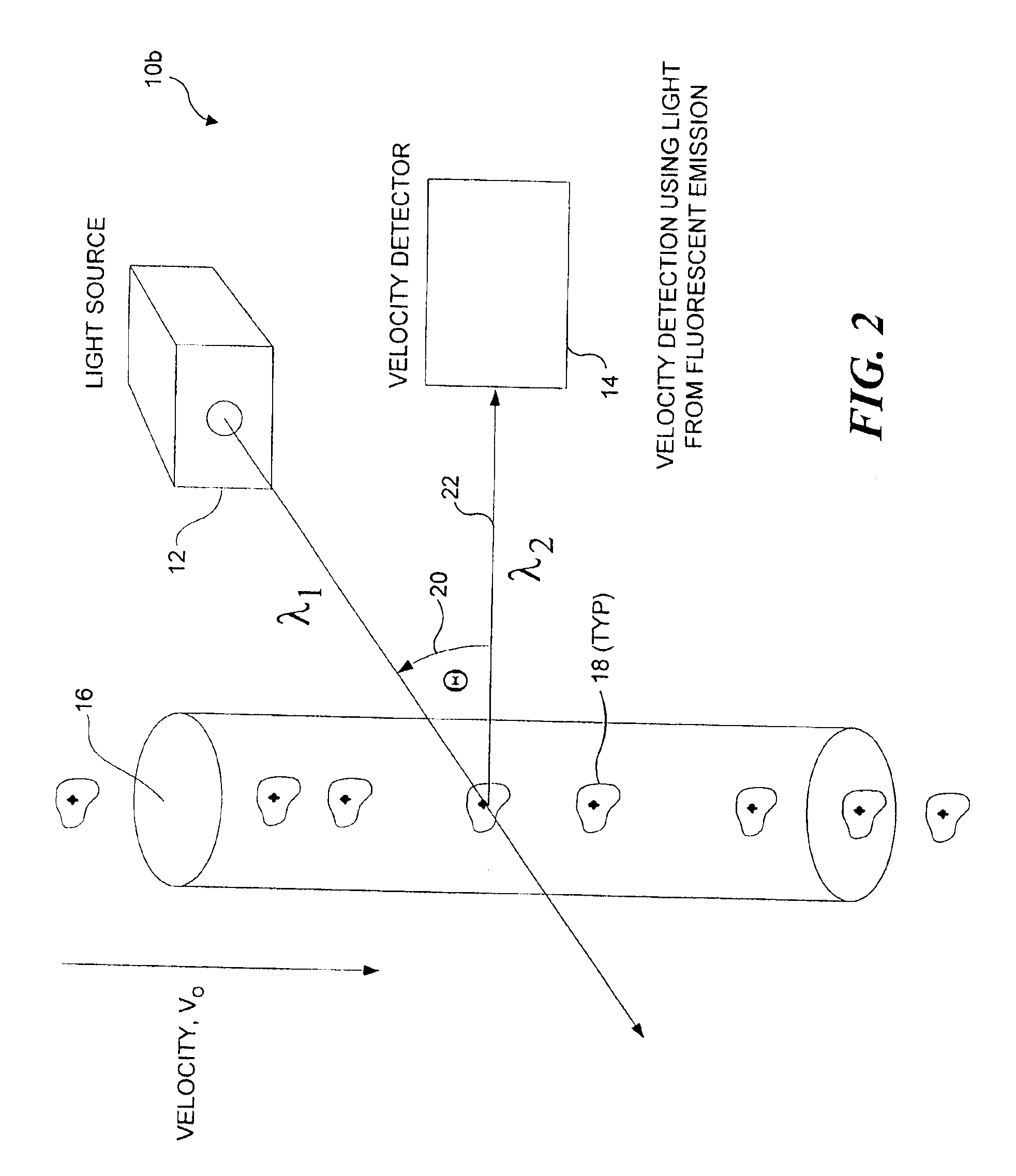Methods of calibrating an imaging system using calibration beads
- Summary
- Abstract
- Description
- Claims
- Application Information
AI Technical Summary
Benefits of technology
Problems solved by technology
Method used
Image
Examples
second embodiment
[0168]The velocity detector must adapt to variations in flow velocity and photodetector SNR in order to produce accurate and reliable velocity estimates. Supervisor program 142, shown in FIG. 19, is used to control the velocity detector and to coordinate the operations of the velocity detector with those of the rest of the imaging system. FIG. 24 is a flowchart showing the steps implemented by the supervisor program for the present invention. The program's three principal outputs, the SNR decision threshold, the spectrum integration limits, and the photodetector amplifier gain, are fed back to the velocity measurement system to optimize its performance.
[0169]Operation of the velocity detection system is initiated with an instrument calibration step 190, in which the noise from the photodetector channel is determined and analyzed in the absence of an optical signal. This can be accomplished by turning off the light sources in the system or stopping the flow of objects through the flo...
third embodiment
[0186]FIG. 32 shows the signal processing and data pathways for the The signal from photodetector 50 is applied to variable-gain amplifier 52, the gain of which is regulated by the supervisor program to optimize SNR. The amplified signal is applied to bandpass filter 54 to remove DC offset and to limit the signal bandwidth to prevent aliasing. The filtered signal is converted to a sequence of digital sample by ADC 56. Mixers 222 and 226 and lowpass filters 230 and 232 (FIG. 25) are implemented in the baseband conversion of a step 311. The baseband signal pair I(n), Q(n) is used for two steps. The first is the generation of the upper sideband and lower sideband signals 314 and 322 in a step 312. The second is the measurement of the velocity of objects passing through the flow cell.
[0187]FIG. 33 illustrates the generation of the upper and lower sideband signals from the I,Q signal pair. An I(n) signal 326 and a Q(n) signal 328 are each processed by the Hilbert Transform operator, app...
fourth embodiment
[0254]FIG. 50 shows the structure of the supervisor program for the present invention. System operation is initiated in a start block 510 when the gain of the variable gain amplifier is set to nominal values, and objects are introduced into the flow stream for image acquisition.
[0255]In a step 512, the supervisor program performs a cross-correlation between segments of the two photodetector signals using a wide span of correlation delays. The delay value yielding the largest peak in the correlogram is used in a step 514 to compute the initial velocity. The cross-correlation delay limits are set in a step 516 to bracket this initial delay value.
[0256]With the cross-correlation delay limits set, object velocity processing commences. During this processing, the supervisor program continuously measures the velocity using the cross correlation method and adjusts the correlation delay limits to maintain execution of a short-span cross-correlation in the neighborhood of the delay required ...
PUM
 Login to View More
Login to View More Abstract
Description
Claims
Application Information
 Login to View More
Login to View More - R&D
- Intellectual Property
- Life Sciences
- Materials
- Tech Scout
- Unparalleled Data Quality
- Higher Quality Content
- 60% Fewer Hallucinations
Browse by: Latest US Patents, China's latest patents, Technical Efficacy Thesaurus, Application Domain, Technology Topic, Popular Technical Reports.
© 2025 PatSnap. All rights reserved.Legal|Privacy policy|Modern Slavery Act Transparency Statement|Sitemap|About US| Contact US: help@patsnap.com



